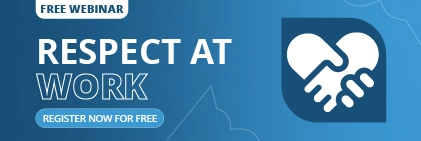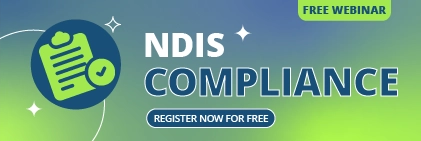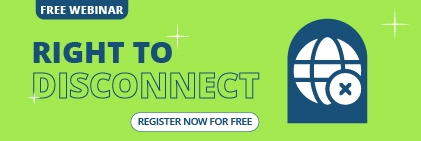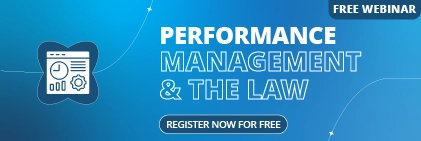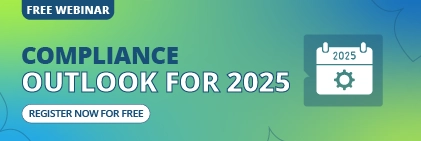In today’s business landscape, managing human resources efficiently is crucial for the success of any company. This is especially important in Australia where compliance with local laws and regulations is essential. Human Resources Software (HR software) has become an indispensable tool for HR managers and business owners, streamlining processes from recruitment to retirement. However, with so many options available, choosing the right HR software can be overwhelming.
This blog post is designed to guide you through the selection process. We’ll explore key features to consider, including budget considerations, vendor evaluation, and much more. By the end of this, you’ll be equipped with the knowledge to make an informed decision that aligns with your company’s needs and goals. Whether you’re a small startup or a large enterprise, this checklist will help you navigate the complexities of HR software selection and ensure you invest in a solution that drives efficiency and compliance within your business.
Understanding Your Needs
Before diving into the world of HR software, it’s essential to understand your company’s specific needs. This step is crucial because the right software for a small business might not suit a large enterprise, and vice versa. If you’re shopping for the wrong product, you’re already off to a poor start.
Assessing Your Company’s Size and Complexity
Consider the size of your company and the complexity of your HR processes. A small business with 20 employees might only need basic features like employee data management and leave tracking. On the other hand, a large corporation with hundreds of employees across multiple locations will require advanced features such as talent management, performance analytics, and compliance tracking.
For example, a local family owned business might find that a simple, cloud-based HR software meets their needs, allowing them to manage employee records and payroll efficiently without unnecessary complexity. Compare this to a large corporation listed on the ASX, who would find that they need much larger and more comprehensive systems to manage all their employees effectively.
Identifying Specific HR Challenges
Every company faces unique challenges. Are you struggling with high employee turnover? Finding it hard to track your level of compliance with Australian labour laws? Or perhaps managing remote teams effectively is a struggle? Pinpointing these issues will help you focus on software that addresses your pain points. Once you identify your challenges, you can work on specific solutions to these problems.
An often-overlooked challenge is supporting mental health initiatives, which are increasingly vital in Australian workplaces. Software that includes wellness tracking or integrates with mental health resources can set you apart in employee care.
Key Features to Consider
When evaluating HR software, look beyond the basics to find features that add real value to your organisation.
Core HR Functions
These are the essentials every HR software should offer:
- Employee Data Management: Centralise employee details like personal info and employment history.
- Payroll Integration: Seamlessly connect with your payroll system to reduce the risk of manual errors.
- Compliance with Australian Laws: Ensure the software stays current with regulations like the Fair Work Act and industry awards.
For instance, a retail chain with outlets across Australia could benefit from software that automates compliance tracking across all locations. Using software to organise your data and information in this manner improves efficiency across the board.
Advanced Features
Depending on your needs, consider these extras:
- Talent Management: Tools for recruitment, onboarding, and performance reviews. This one is tricky and often requires greater levels of manual oversight.
- Employee Self-Service: Let employees manage their data, leave requests, and payslips.
- Analytics and Reporting: Gain insights into workforce trends and HR metrics. These are particularly helpful for identifying and closing gaps in your team and their skill sets.
Software with predictive analytics can forecast future HR needs based on current data. This is a game-changer for strategic planning that’s rarely emphasised. HR software with payroll integration is a great tool to free up your HR team, allowing them to focus more on the overall business strategy.
1. Budget and Cost Considerations
Budget plays a big role in choosing HR software. Knowing the pricing models and hidden costs can prevent surprises down the line.
Understanding pricing models can be tough. HR software typically comes with these pricing options:
- Per User Per Month: Scales with your team size, ideal for flexibility. This is great for small businesses with few employees.
- Flat Fee: A fixed cost, great for larger companies with predictable budgets.
- Tiered Pricing: Different feature sets at varying price points. This will have your biggest ranges, with an ‘Enterprise tier’ being common for large companies.
A startup might opt for a per-user model to keep initial costs low, while an established firm might choose a flat fee for consistency.
2. Hidden Costs to Watch Out For
Look out for:
- Implementation Fees: Costs to set up the software.
- Training Costs: Expenses to get your team up to speed.
- Upgrade Fees: Charges for additional features or modules.
Some vendors offer “lifetime” pricing or long-term commitment discounts, a smart move if you’re confident in the software’s fit. However, be sure to read the terms and conditions of these agreements. Often, you’ll find that ‘lifetime’ only means 10 years. Affordable HR software solutions can be hard to find, but once you lock in a deal, you can be confident in your choices.
3. Vendor Evaluation
The vendor you choose is just as important as the software itself. A good vendor ensures a smooth experience. Have a look at their history and see if they have a healthy track record. Reviews and case studies are solid gold here, especially from organisations in your industry. Look for businesses that have a stable history and reputation, and you’ll be assured of your choice.
4. Customer Support and Training
Assess the support and training offered:
- 24/7 Support: Crucial for businesses with non-standard hours.
- Comprehensive Training: Look for webinars, tutorials, and guides.
Some vendors provide dedicated account managers for Australian clients, offering personalised support that understands local nuances. The quality of training offered with your new HR software is extremely important to improve adoption rates within your business.
Implementation and Integration with Existing Systems
A key part of any HR software implementation checklist is the implementation and integration capabilities. A smooth rollout minimises disruption, so focus on how the software fits into your operations. You should choose software with a straightforward setup process. Cloud-based options often implement faster than on-site ones due to no hardware needs.
Make sure it works with your current tools. Think of your accounting software or time-tracking systems. Ensuring that your chosen software solution is scalable is very important. It should be able to adapt to your company’s future needs. Look for API access for custom integrations, giving you flexibility as your tech platform evolves.
Security and Data Privacy
With employee data on the line, security and privacy are must-haves. Choose software with strong security. This includes encryption, secure servers, and regular audits. Talk to your vendor, and see if their software meets high security standards. It should align with key Australian laws like the Privacy Act (1988). Features like automatic data retention policies can simplify compliance without extra effort. Data security in HR software is a necessary part of the process, and one that will save your business significant pain in the future.
Ease of Use for HR Staff and Employees
The software should be easy for everyone to use, for HR staff and employees alike. An intuitive interface boosts adoption. Sentrient’s clean dashboard is a great example of best business practices.
A mobile HR app or responsive design is a great way to stand out in today’s workforce. Offline capabilities in mobile apps let employees work without internet access. This is a practical perk, which many people will find useful.
Trial and Testing
Test before you buy to ensure it’s the right fit. Trials let you explore the software firsthand. Sentrient offers a free demo to get you started. During the test period, you absolutely have to cover a few things. Check navigation, performance, features, and support responsiveness. Involve employees in testing for broader feedback on usability. The HR software trial period is, at the end of the day, an advertisement for the broader product, but it’s still extremely useful to take full advantage of it.
Making the Decision
Time to choose wisely after all your research. This is important, so make sure you gather the opinions of the full leadership team at your business.
Use a comparison chart to weigh features, costs, and support. Rank these factors and judge how essential you find them, versus how much you’re willing to pay for them.
Choosing HR software for Australian businesses is often unique, due to our unique global position. Ensure you choose a local vendor who can adequately assess and handle our unique laws and regulations. Get input from department heads or IT to cover all bases. Plan for future stakeholders and ensure the software can handle new roles as you grow.
Post-Purchase Considerations
Once you have made your selection, position yourself for success by fully utilising any available vendor training. Initially, ensure that your managers are comprehensively trained before disseminating this knowledge to the rest of your team. HR software support and training are often overlooked by businesses, so if you’re able to clarify your expectations with the vendor ahead of time, that’ll make your post-purchase journey significantly easier. Pick a vendor with regular updates and responsive help. A clear update roadmap shows a vendor’s commitment to staying relevant.
Quick Takeaways:
- Match software to your company’s size and challenges.
- Focus on essentials like payroll and compliance, plus extras like analytics.
- Go for trusted names like Sentrient, which have great support.
- Prioritise data protection and legal compliance.
- Choose intuitive, mobile-friendly options.
Conclusion
Picking the right HR software is a big deal for Australian companies. It affects compliance, efficiency, and employee happiness. This checklist helps you tackle the process with confidence: assess your needs, prioritise features, weigh costs and vendors, ensure security and usability, and test before committing. Sentrient shines as a top pick, offering a compliant, user-friendly solution tailored for Australian businesses. Don’t let the options overwhelm you; instead, use this guide to find the perfect fit. Ready to streamline your HR? Check out Sentrient today and take your human resources to the next level.
FAQs
1. What is HR software?
HR software is a digital system that handles tasks like payroll, hiring, and staff records. It saves time, reduces errors, and keeps everything organised for Australian businesses.
2. Why is HR software important for Australian companies?
It’s key for staying legal with laws like the Fair Work Act and boosting efficiency. Australian companies use it to manage staff better and avoid compliance headaches.
3. What features should I look for in HR software?
Look for data storage, payroll links, compliance updates, hiring tools, and self-service options. These make HR software for small businesses in Australia super useful.
4. How much does HR software cost?
Costs vary by plan. Options include per user, flat fee, or tiered pricing. Account for setup, training, and upgrade fees to budget effectively with affordable HR software solutions. Hidden fees exist, but with a keen eye, they’re simple to spot.
5. Can HR software help with compliance?
Yes, it tracks laws like the Privacy Act and Fair Work Act, updating automatically. This keeps your business safe and legal with little effort. Staying up to date with legislation keeps your business afloat in troubled times.
6. Is mobile access important in HR software?
Totally! Mobile apps let staff handle requests anywhere, anytime. It’s a must for remote teams and boosts use with mobile HR apps. Convenience for your workers means less time going back and forth with HR.
7. How do I choose the right vendor?
Pick one with a good name and strong support, like Sentrient. Check reviews and training to ensure they fit Australian needs well. Do your research and try out demos and free trials to gauge what will fit best for you.
8. What’s the best HR software for small businesses in Australia?
Sentrient stands out for small businesses. It’s affordable, grows with you, and meets local regulations. It’s perfect for small businesses in Australia.
9. How long does it take to implement HR software?
Cloud options can start in days, while on-site options take weeks. Plan ahead with a solid HR software implementation checklist for a smooth implementation. This also depends on your business size, but for the most part, the planning process will take the most time rather than the actual implementation phase.
10. Can I try HR software before buying?
Yes, vendors like Sentrient offer trials. Test features and ease of use during the HR software trial period to see if it’s right for you.
